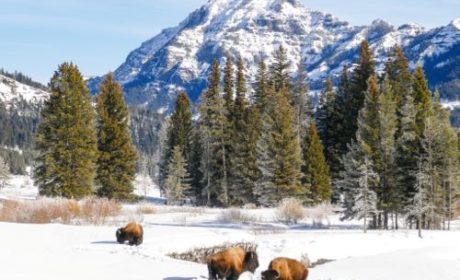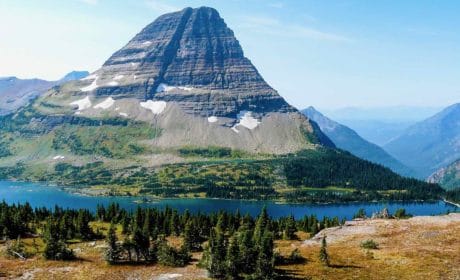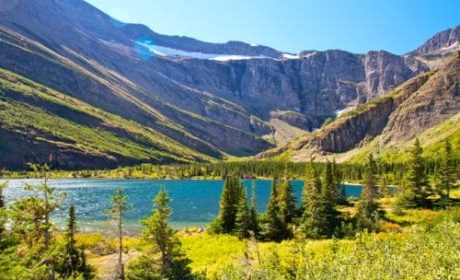Did you know that Yellowstone National Park has 5 entrances? Which ones should you include on a visit to America’s first national park? And if you were short on time, which one or two should you choose?
With five entrances scattered around its edges, each region in Yellowstone unlocks a unique gateway to bubbling earth, roaming bears, howling wolves, and history appearing around every bend in the river. Debi Lander (ByLanderSea) has visited Yellowstone National Park twice. Read on as Debi shares her first-hand experiences and introduces us to the wonders of Yellowstone’s 5 entrances.
Of all the national parks I’ve visited—nearly half of the 63 total—Yellowstone tops the list for its variety of unique landscapes and abundance of wildlife. It ties with Yosemite National Park for the most entrances— five to be exact. And, when it comes to Yellowstone, I’ve experienced most of them.
My first visit to Yellowstone National Park came in 2013 when I left Boise, Idaho, headed for Grand Teton National Park. I spent the night in Victor, Idaho, at the gorgeous Teton Springs Lodge (now The Lodge at Bronze Buffalo Ranch, feeling dwarfed by the 12,000-foot mountain range just 30 minutes away.
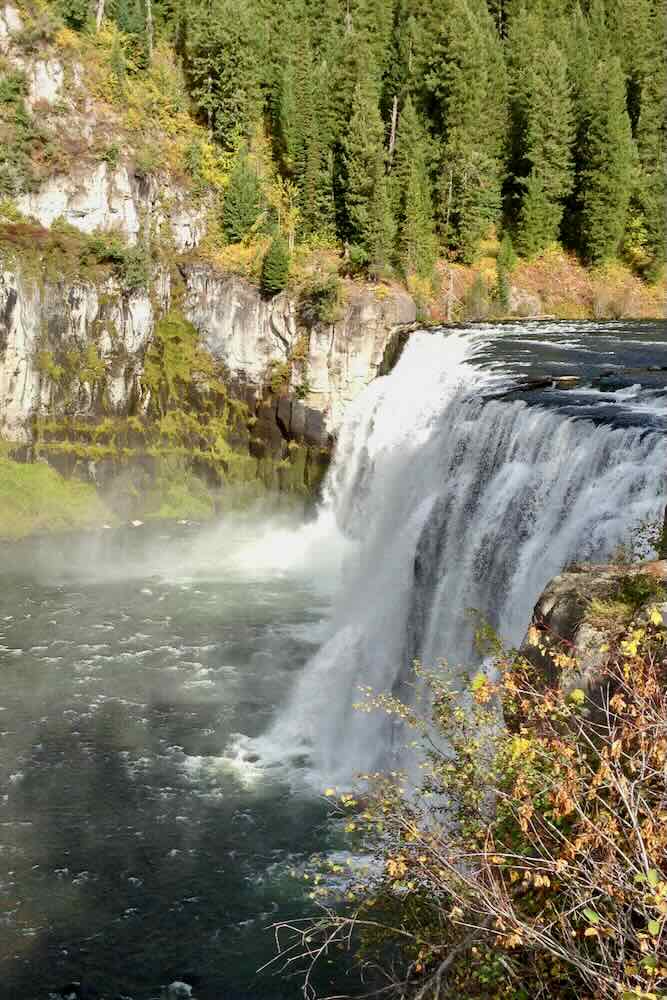
While I longed to see the Tetons, I wanted to spend as much of my two days as possible in Yellowstone. So before dawn, I set off toward Island Park and Yellowstone’s most popular and most convenient entrance at West Yellowstone, Montana.
The views along the way begged me to stop and take photos. I finally succumbed at the dramatic Mesa Falls—but only briefly.
Table of Contents
The West Entrance: The heartbeat of Old Faithful and geyser country
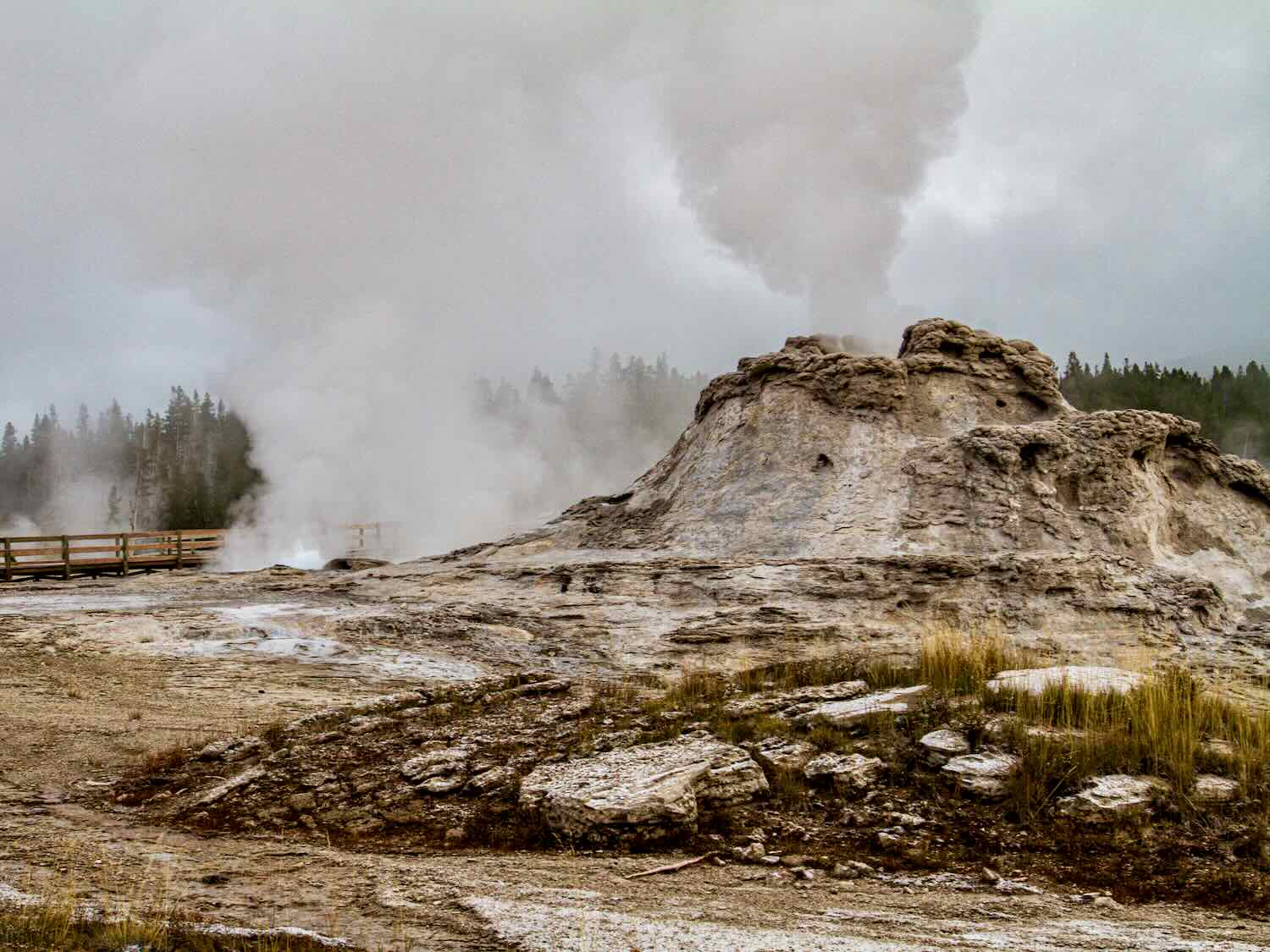
West Yellowstone, home to the West Entrance to Yellowstone, is a popular tourist hub. The small, gateway town bustles in summer with visitors and is blanketed in snow come winter. West Yellowstone caters to adventurers: hikers, campers, snowmobilers, fly-fishers, and just about every type of traveler from every continent.
Crossing into the 2.2 million-acre park from the West Entrance, the most popular Yellowstone entrance, you immediately follow the Madison River. Fly fishers wade in thigh-deep water, casting their lines while elk bugle from the distant hills.
I drove slowly—not just because of traffic, but because the surroundings demand it. I soaked in the soft light, the sound of murmuring waters, and the beauty of the forested landscape. This is where I first fell in love with Yellowstone National Park.
Staying the night at the Old Faithful Inn
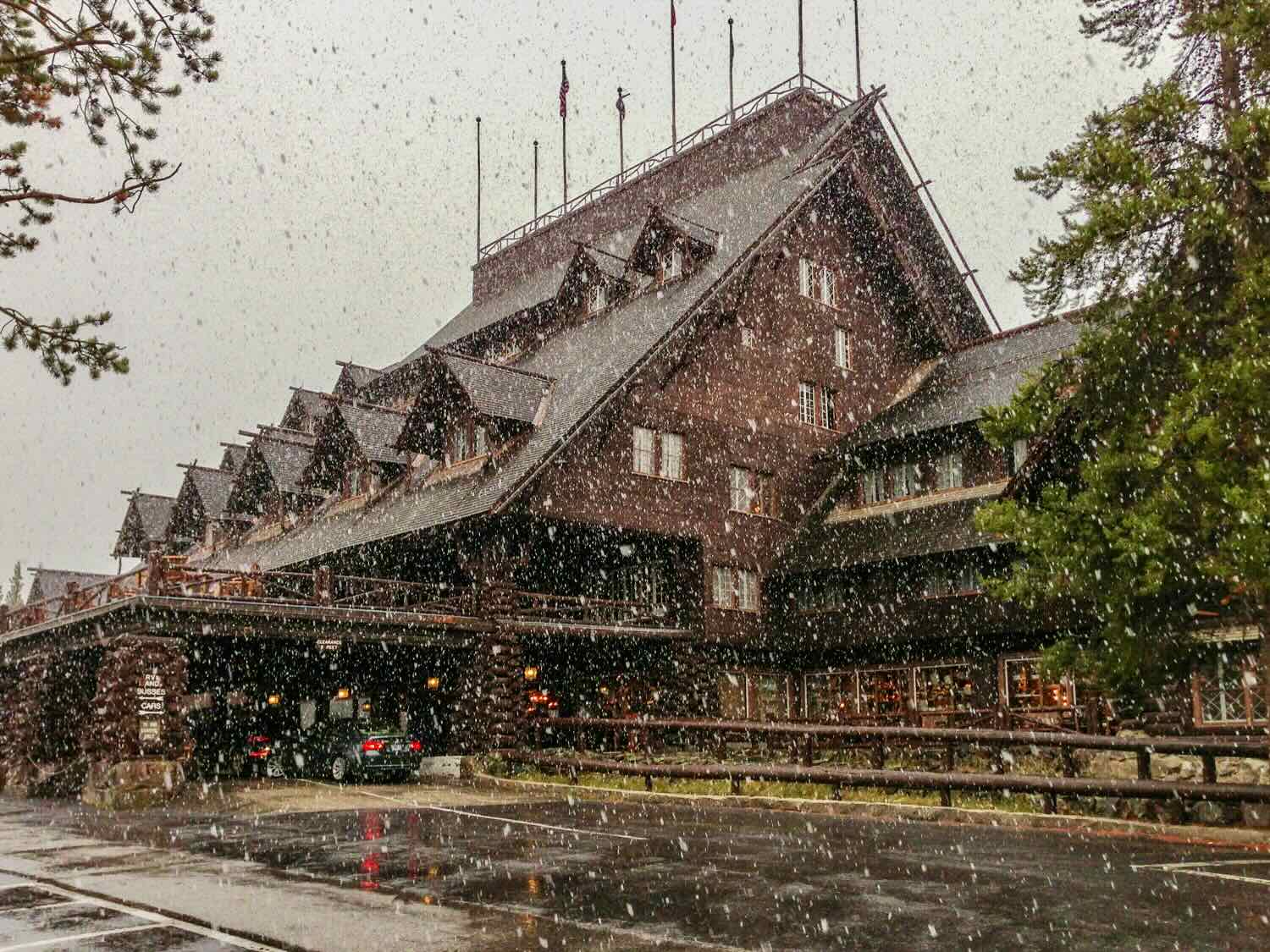
Every road eventually leads to Old Faithful—the beating heart of Yellowstone, and my overnight destination. I stopped and hiked closer to the famous geyser, waiting with the crowd that always gathers.
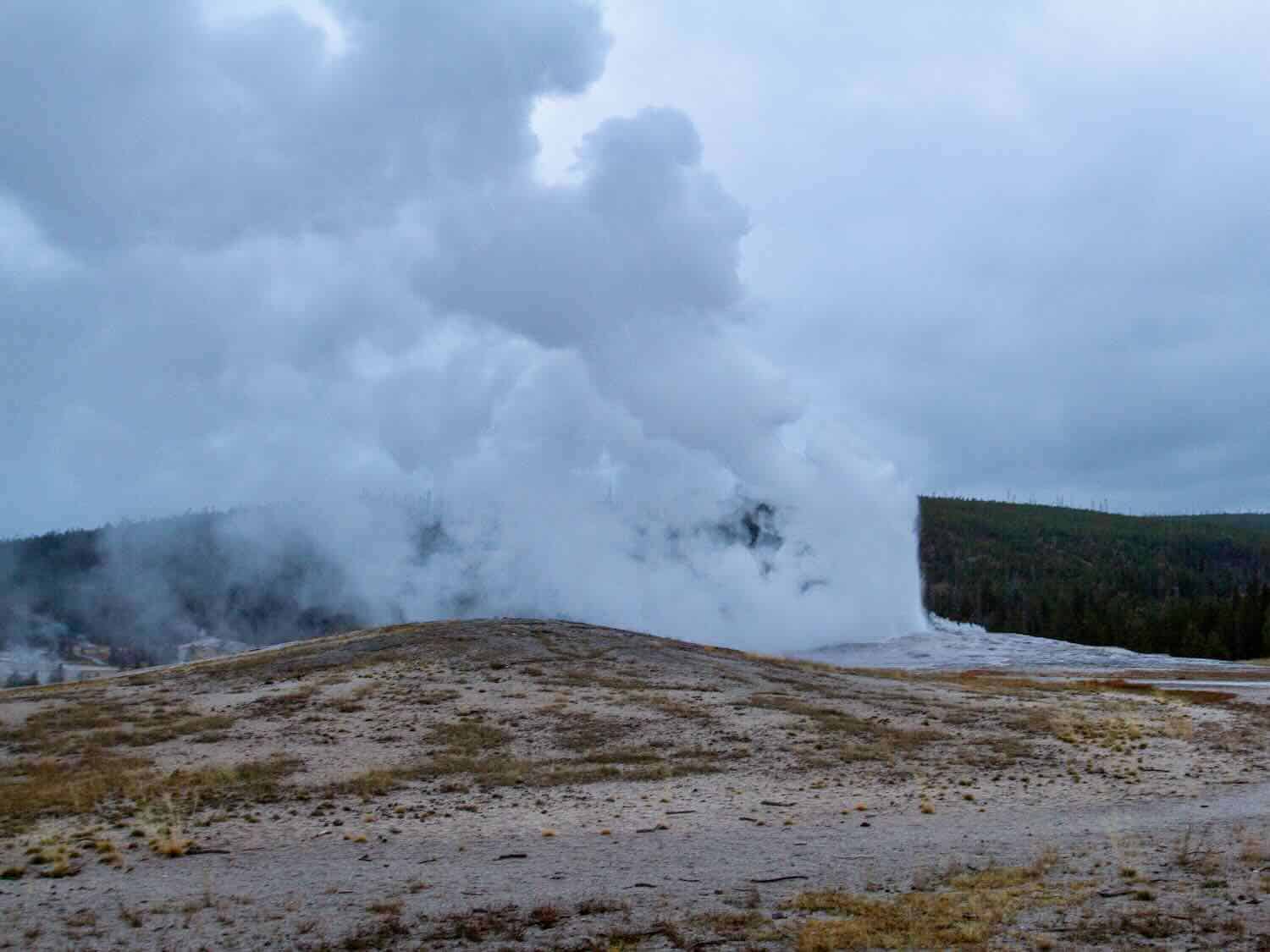
When Old Faithful, finally started to spurt (on schedule, of course), oohs and aahs slipped from the crowd as a wide burst of steam shot 80 to 180 feet into the air. The superheated water gets pushed upward through constricted vents lined with silica deposits, creating dramatic eruptions. You’ve probably seen Old Faithful in photos or videos—but the real thing is magical.
Lucky for me, I had a two-night reservation at the Old Faithful Inn (click here to book), the granddaddy of national park lodges. From the moment I walked into the towering, timbered lobby, time stopped.
Built in 1904 from native lodgepole pine and volcanic rock, Old Faithful Inn feels like a cathedral to the wilderness. I half expected Teddy Roosevelt to emerge from the massive hearth. Over the years, the lodge has been expanded, but it’s maintained an authentic log cabin feel.
My snug room exuded rustic charm—don’t expect posh. No TV, no distractions, just a comfortable bed and creaky old floorboards. Imagine my delight: I could watch Old Faithful erupt from my window! The geyser erupts about 17 times a day, and no matter how many times you witness it, Old Faithful never disappoints.
Boomer Travel Tip
Looking for a national parks books reading list? Here are our recommendations for 52 of the Best National Parks Books.
Riding the famous Yellowstone Yellow Bus
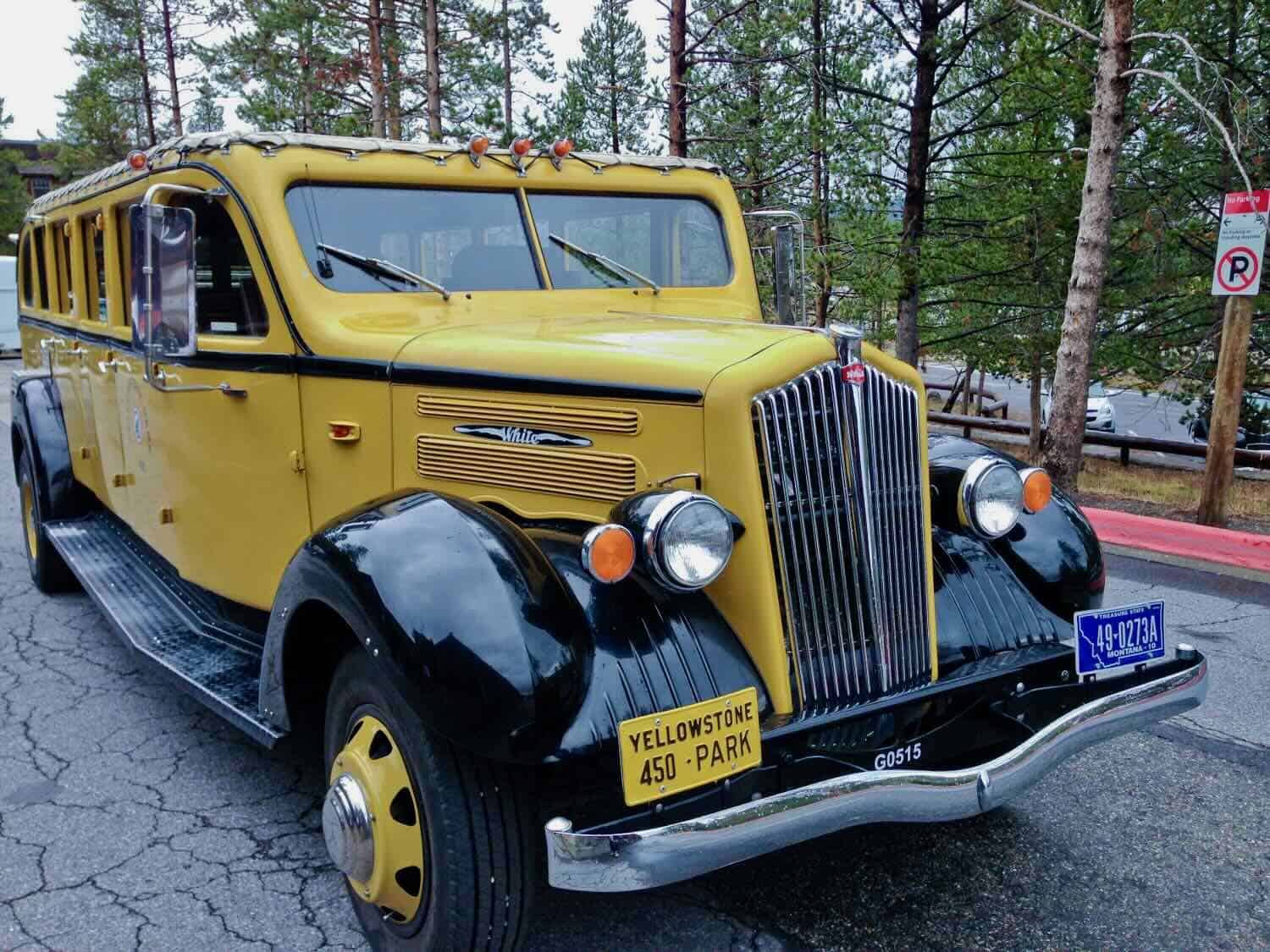
I fit in a Yellow Bus Tour aboard a restored 1930s White Motor Company vehicle to explore the geysers in the Firehole Basin. Our guide was incredibly knowledgeable and helpful as he guided us along the boardwalks.
Be prepared to feel special—plenty of onlookers snap photos of you boarding the iconic yellow bus.
Dining at Old Faithful Inn
By evening, the historic dining room bustled with mostly boomer travelers. I savored local trout with lemon butter, paired with a crisp white wine. The menu features sustainable fare, and both dinner and breakfast were delightful.
Best of all, staying at the Inn places you in the heart of the park. Before breakfast, I strolled out the door to explore more geothermal wonders. A surprise overnight dusting of snow turned the landscape into an otherworldly dream.
Driving to Gardiner, Montana and the Northeast Entrance
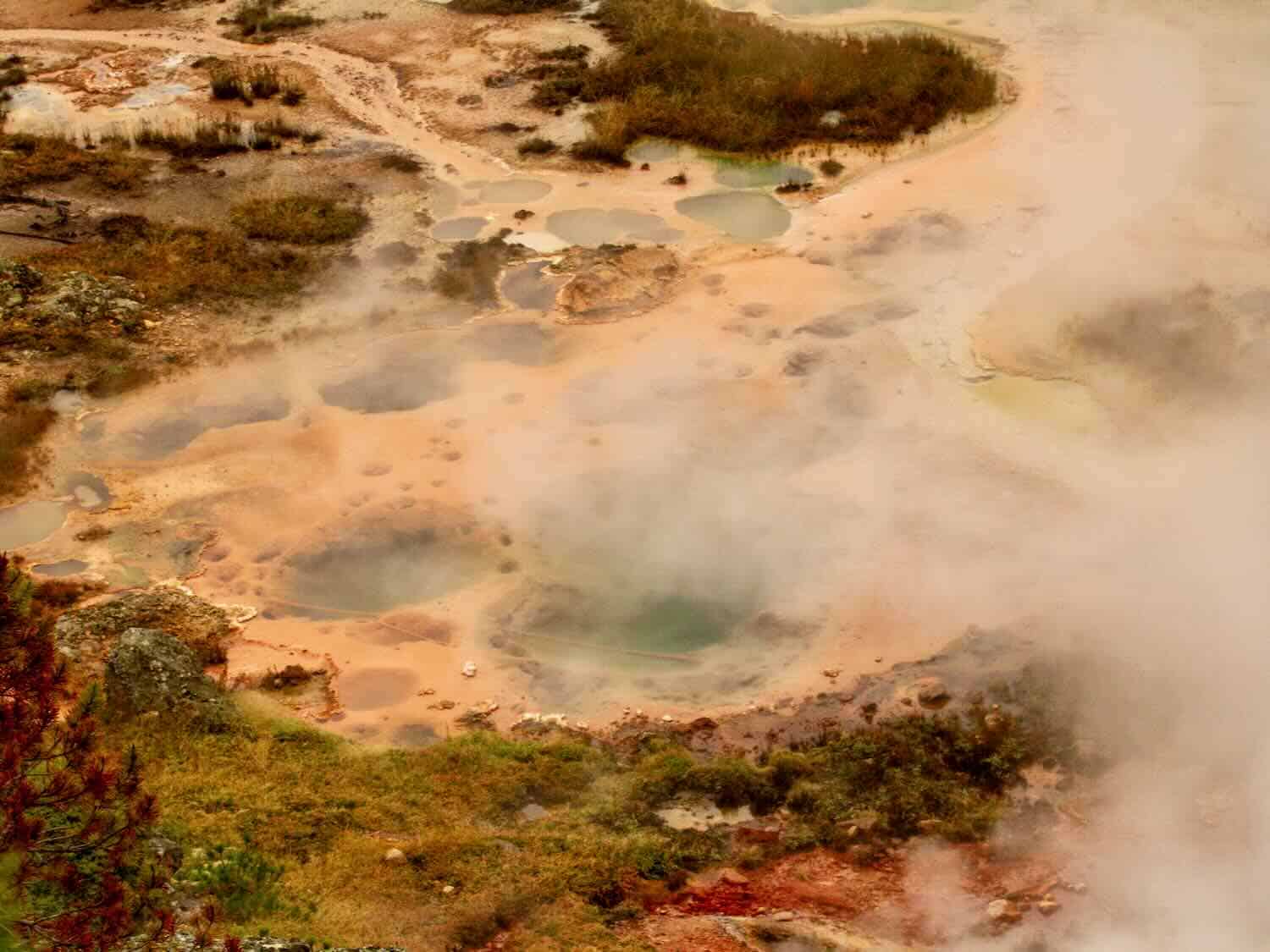
I set off toward Gardiner, Montana, the original and northern entrance. Though the drive was estimated at three hours, progress was slow. Goosebumps and glee took hold as I passed grassy, snow-dusted valleys and steaming rivers.
Along the way, I stopped at the Continental Divide. Standing there, straddling the spine of the country, I marveled at the thought that water on one side flows to the Pacific, while on the other it flows to the Atlantic.
A simple roadside sign marks the spot, but the significance isn’t lost on travelers. The Continental Divide is a geographical curiosity and a perfect photo op—proof you’ve truly crossed into the heart of Yellowstone’s wild terrain.
Next to catch my attention was the eerily beautiful Artist Paint Pots offered bubbling mud pools and meandering thermal streams painted in rainbow hues.
Road backups are common when large animals appear—drivers stop, cameras in hand. Despite warnings, some folks even step out of their cars. A reminder: bison are wild and powerful so give them plenty of room.
Boomer Travel Tip
Start planning your next national park trip with our National Park Travel Planner!
The North Entrance: Gateway to Mammoth Hot Springs and wildlife
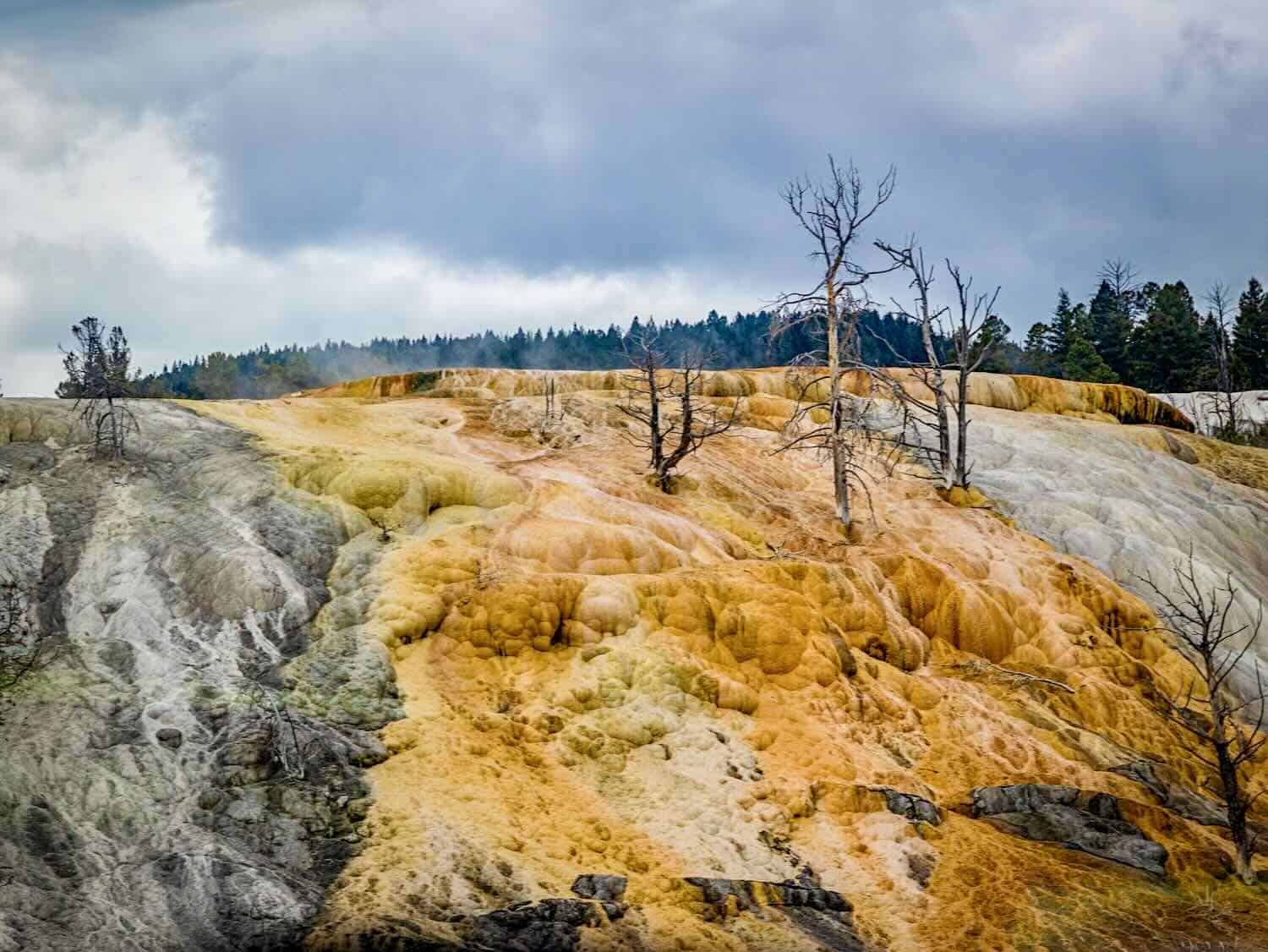
When I finally reached the Roosevelt Arch at the Northeast Entrance, I paused. The massive basalt monument, built in 1903, bears the chiseled words: “For the Benefit and Enjoyment of the People.”
Yellowstone was established on March 1, 1872, by President Ulysses S. Grant via the Yellowstone National Park Protection Act—the first national park in the world. President
Theodore Roosevelt, visiting in 1903, laid the cornerstone of the arch, formalizing the entry point.
The arch now stands as a relic from a bygone era, when visitors arrived by train and carriage. (I like imagining that scene—but that’s a story for another day.)
Five miles inside the gate lies Mammoth Hot Springs, rising like a fossilized fountain. Terraces of cream, gold, and rust cascade down like melting ice cream. Steam curls into the air, carrying the earthy scent of sulfur.
While the Earth’s crust is typically 20–30 miles thick, Yellowstone’s magma rests just 1–7 miles below the surface. As the mineral-rich hot water rises and cools, it deposits calcium carbonate, forming colorful formations that resemble frozen waterfalls.
Nearby sits the Mammoth Hot Springs Historic District, once Fort Yellowstone, where the U.S. Army managed the park in the early 20th century. Today, the stone buildings house park offices and visitor services.
The Visitor Center and Lodge offer great places to learn about Yellowstone’s wildlife and history, talk with rangers, or grab a bite. Overnight accommodations are available at Mammoth Hot Springs Hotel and Cabins (book here). Accommodations are modern but still retain a historic feel.
This area is rich in wildlife—elk commonly graze the lawns and wander through the village. From Mammoth, the road leads into the hills, where bison roam and the Lamar Valley whispers the call of wolves. But I saved that stretch for a later trip.
Driving the Beartooth Highway to Cooke City and the Northeast Entrance

Fast forward to 2024 and a long-awaited return to Yellowstone. I jumped at the chance, using Cody, Wyoming, as my base. A full-day bus tour would take me via the Beartooth Highway to the park’s least-used entrance, returning through the closer East Gate.
If you want drama, take the Beartooth Highway. The route includes the Chief Joseph Scenic Byway, named for the Nez Perce leader. The road climbs steeply and dramatically into the Absaroka Mountains, then zigzags along sweeping switchbacks and jaw-dropping alpine vistas.
Charles Kuralt once called the Beartooth Highway “the most beautiful drive in America.” I won’t argue.
We spotted bighorn sheep and mule deer. The highway ascends into alpine tundra and over 10,900 feet—past lingering snowbanks, even in June—and opens to a plateau dotted with glassy lakes.
Eventually, a western descent leads to Cooke City, a weathered town that clings to its Wild West roots: log cabins, wooden signs, and of course, a saloon. In winter, snowmobiles reign supreme in this isolated Montana town (The Beartooth Highway is closed in winter so all access to Cooke City is from Gardiner where Highway 89 travels through the North Gate, by Mammoth Hot Springs, and through Lamar Valley to Silver Gate and Cooke City).
Boomer Travel Tip
Check out more of our national park travel ideas.
The Northeast Entrance: Entering the realm of Lamar Valley’s Wildlife
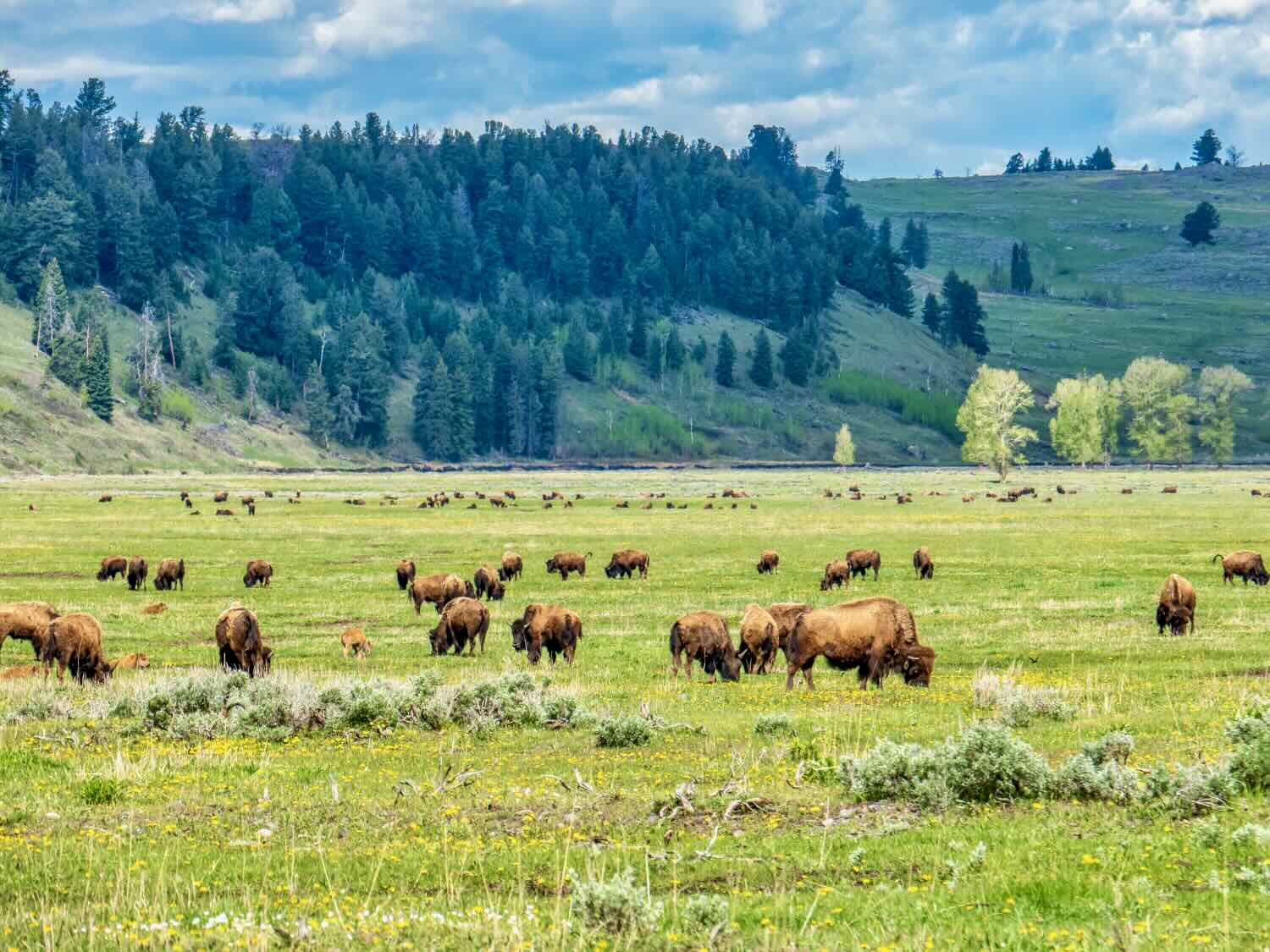
Soon, we reached the Northeast Entrance Station, Yellowstone’s quietest gate and something of a well-kept secret. It deposits you directly into the Lamar Valley, often called Yellowstone’s Serengeti. The landscape is breathtaking.
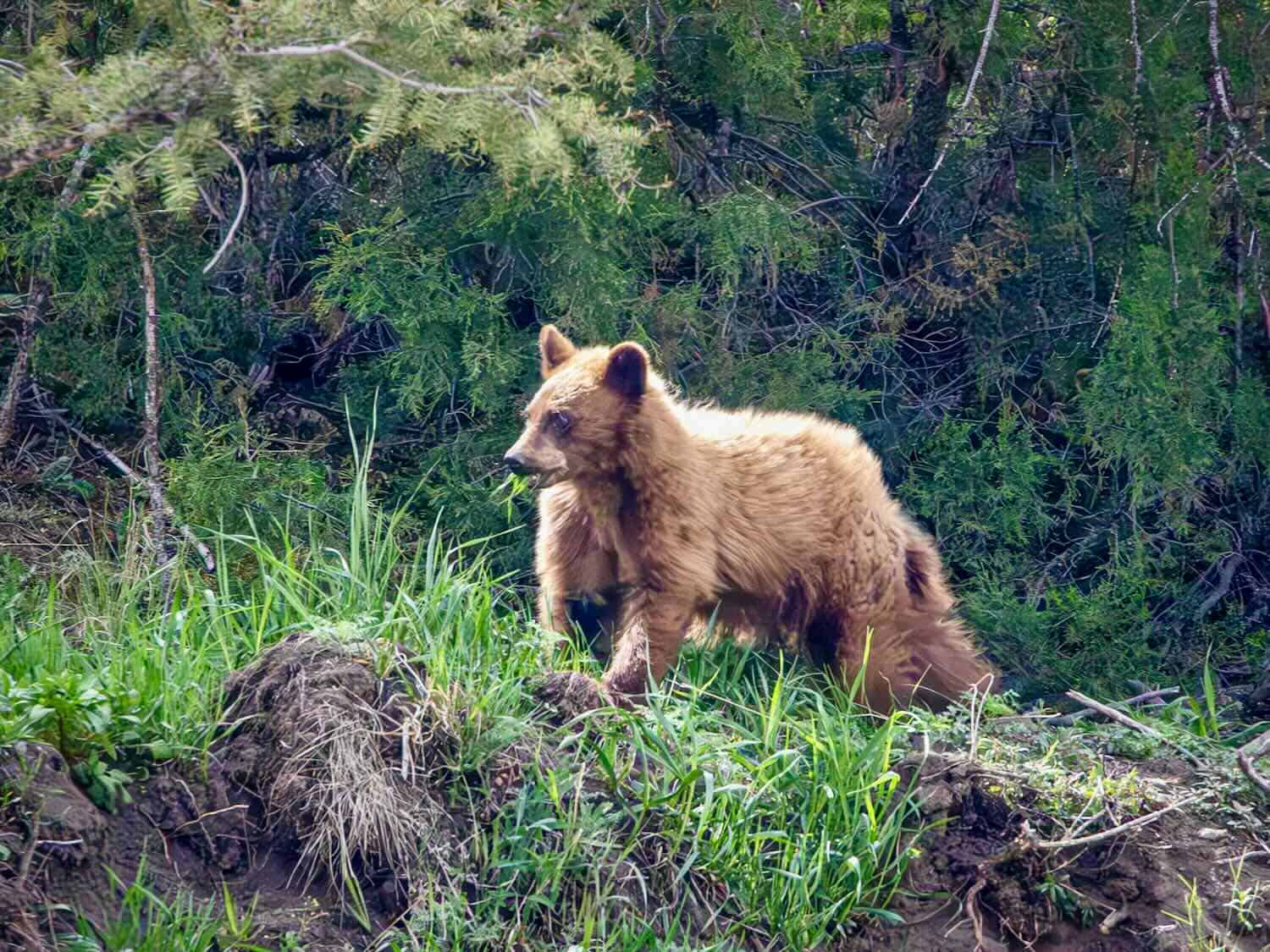
Our driver pulled over more than once for bison herds, pronghorn, and—luckily—grizzlies lumbering across a distant meadow. My long lens confirmed them. Not prize-winning photos, but prize-winning memories. Wolves are also a major attraction in Lamar Valley.
Independent-minded (and well-prepared) travelers can visit Lamar Valley in winter. That’s what Donna and Alan did!
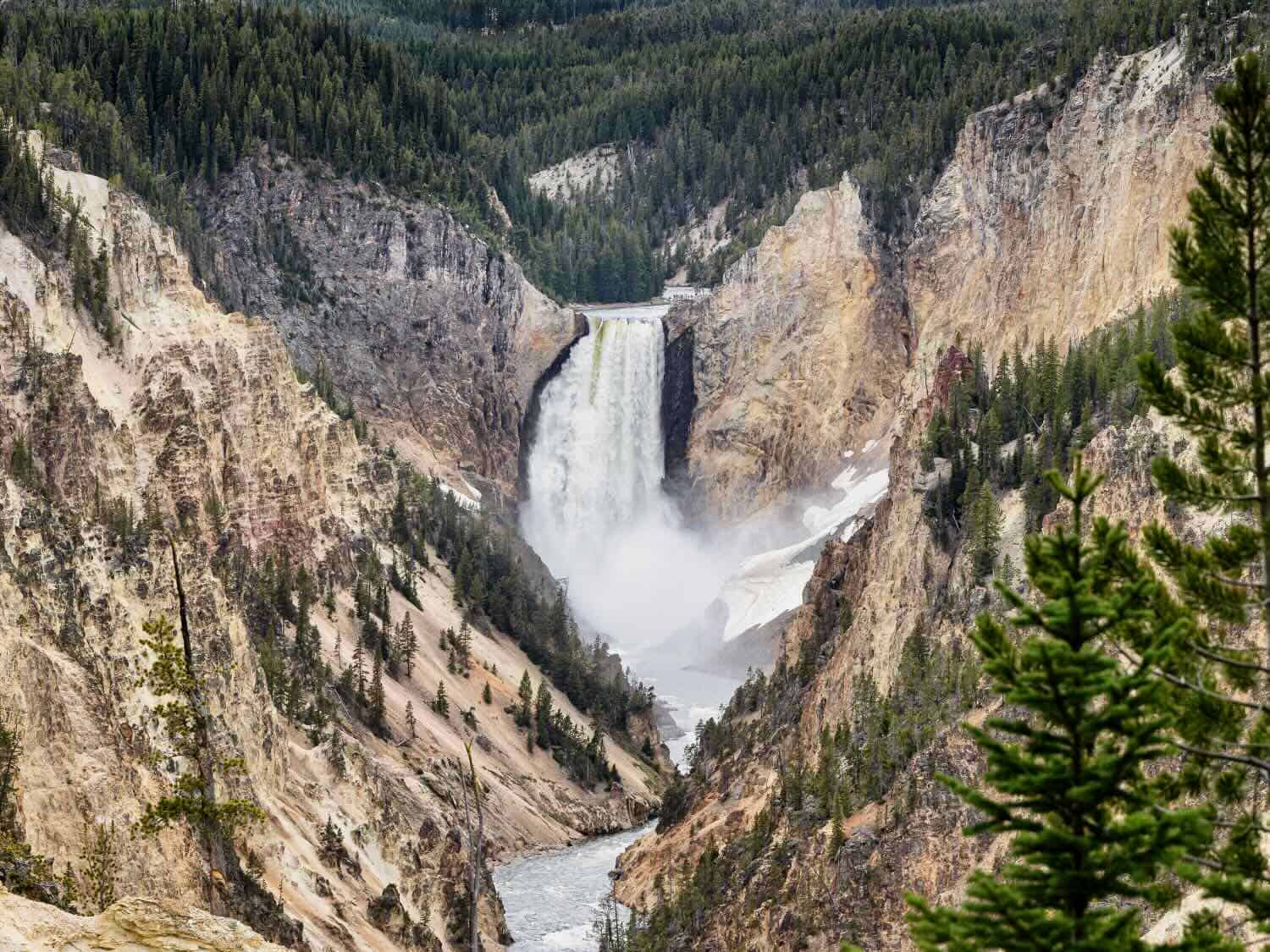
We stopped in Mammoth Hot Springs for lunch and photos, then continued on to the Lower Falls of the Yellowstone River—officially the Lower Falls of the Grand Canyon of the Yellowstone. I’d missed them on my first visit, and they are absolutely worth the side trip. The Yellowstone River plunges a staggering 308 feet—nearly twice the height of Niagara Falls.
We visited Lookout Point and Inspiration Point, where I captured my favorite shots of the trip.
The East Entrance: Grand Canyon of the Yellowstone and Cody, Wyoming
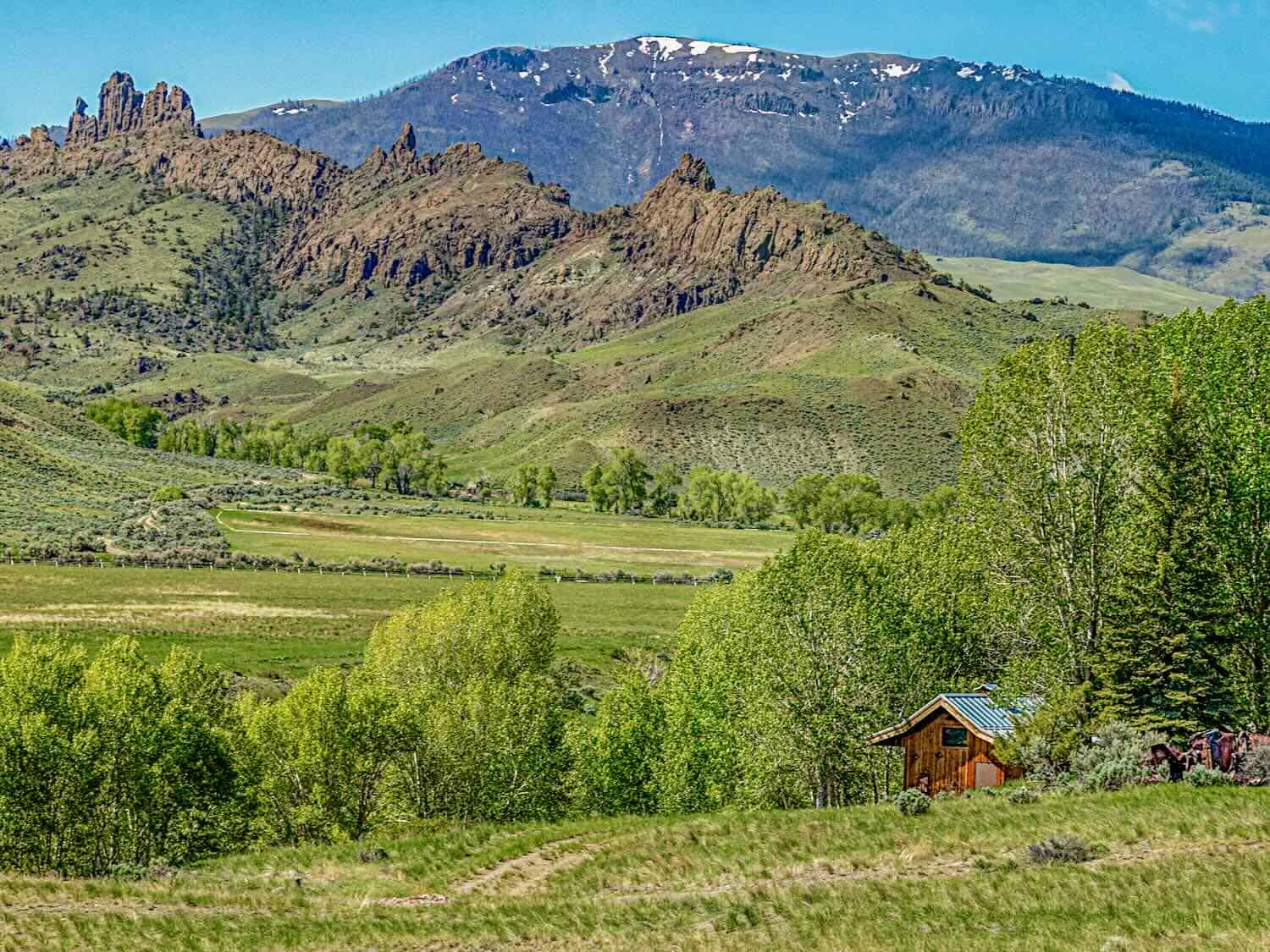
While visitors to Yellowstone enter the East Entrance to explore the Grand Canyon of the Yellowstone and it’s impressive waterfalls, the exit to the East Gate sends them in the direction of Cody, Wyoming.
By late afternoon, our bus headed out through the East Entrance, the closest to Cody. This is Buffalo Bill’s town, built with foresight that Yellowstone tourism would follow.
Don’t miss the Buffalo Bill Center of the West—five fabulous museums in one—or the nightly rodeo full of thrilling fun.
The drive back to Cody hugs the North Fork of the Shoshone River, flanked by jagged cliffs and fantastical rock formations. This is Big Sky Country—the wild West in full glory. No camera can capture it properly. You simply must see it in person.
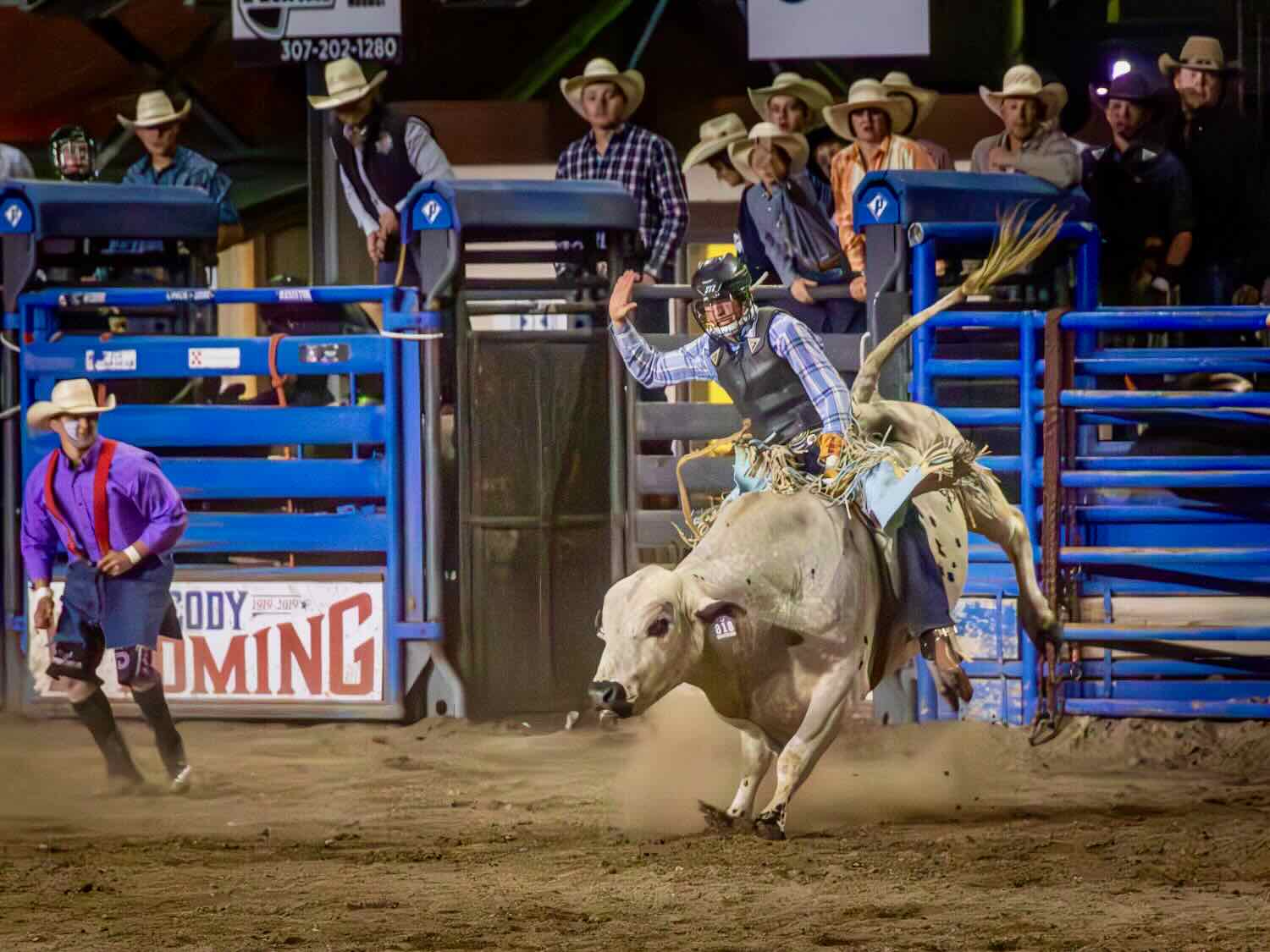
Cody is a great place to stay and explore, but another option is Pahaska Tepee Resort, “Buffalo Bill” Cody’s old hunting lodge and hotel. It is located 50 miles west of the town and two miles from the east entrance to Yellowstone.
The South Entrance: Where Forests Meet Grand Teton Vibes
My trips have not taken me through the South Entrance, where travelers head north from Jackson Hole into Yellowstone National Park. They say the drive is stunning.
The jagged Tetons rise without foothills, chiseled seemingly straight from the sky. Conifers line the road, and the scent of pine and cool mountain air is intoxicating.
I missed Lewis Falls, a 30-foot cascade over basalt rock, and West Thumb Geyser Basin, where geothermal wonders bubble beside the lake—and Yellowstone’s heat meets alpine serenity.
Yellowstone is so much more than a collection of natural wonders. It’s a soul-stirring saga of geysers and stone, fur, and feather. Each entrance offers a different chapter—North’s historic arch, Northeast’s wildlife corridor, East’s rugged grandeur, South’s alpine intimacy, and West’s riverine welcome.
But it’s only when you step inside—walk the boardwalks, feel the spray of a geyser, and sleep beneath the log-lined rafters of the Old Faithful Inn—that Yellowstone truly writes itself into your heart.
No matter which road you take into Yellowstone, take your time. The park rewards wanderers, not just sightseers. And if you’re lucky, like I was, you’ll leave not just with photographs—but something far more lasting: wonder.

